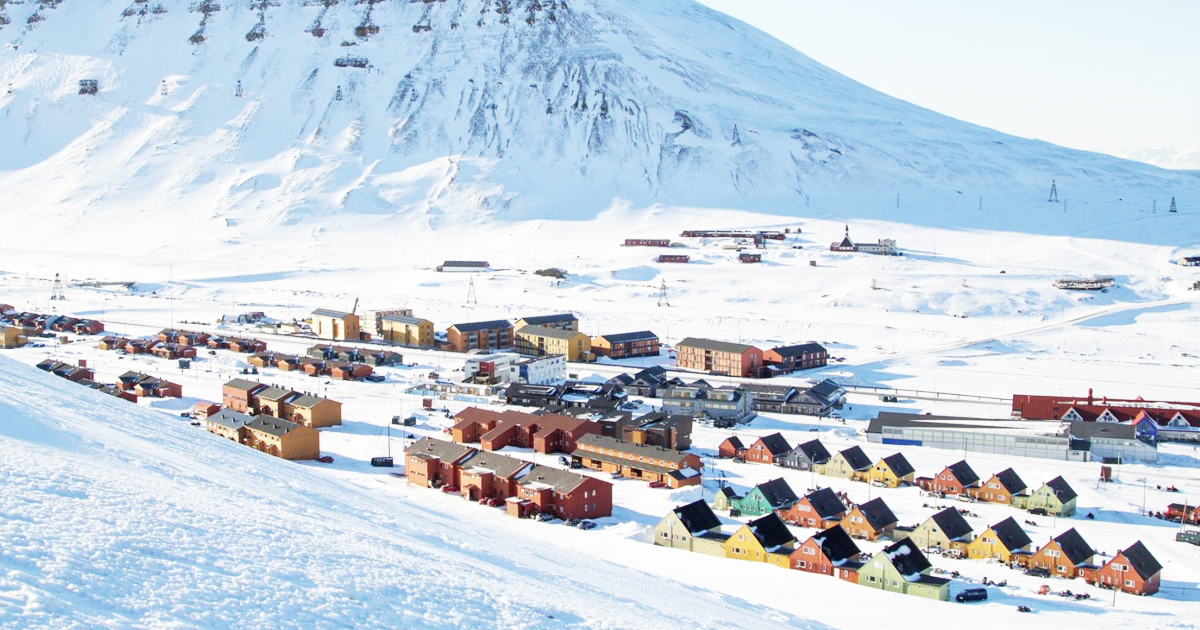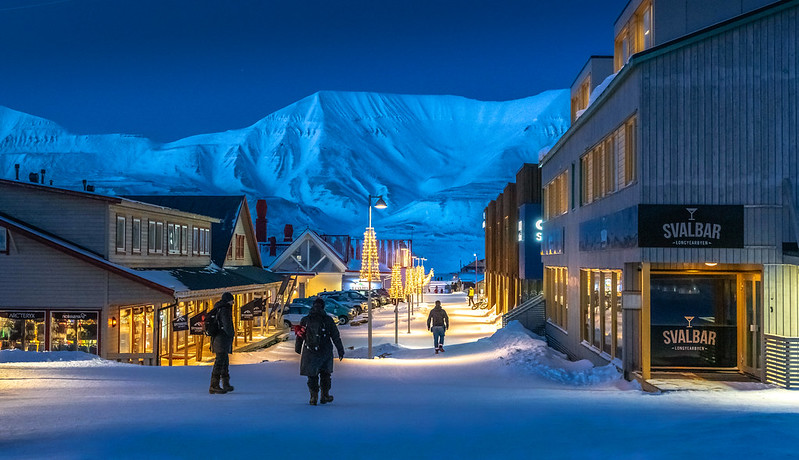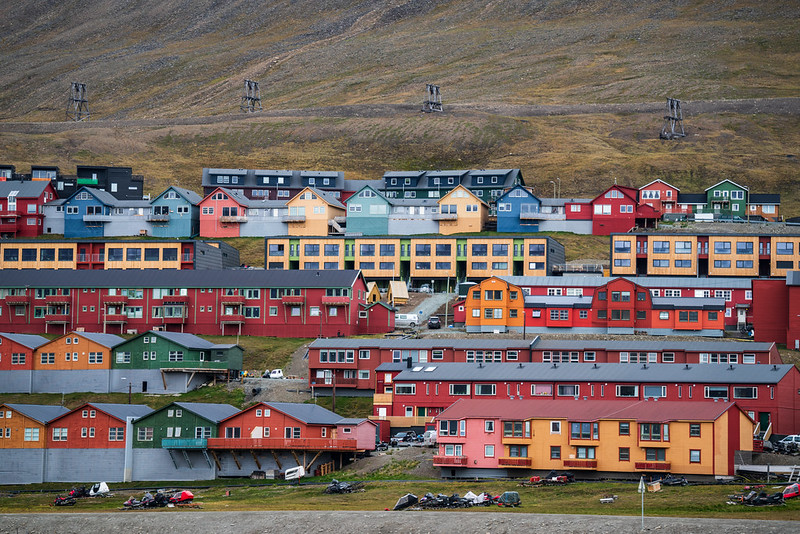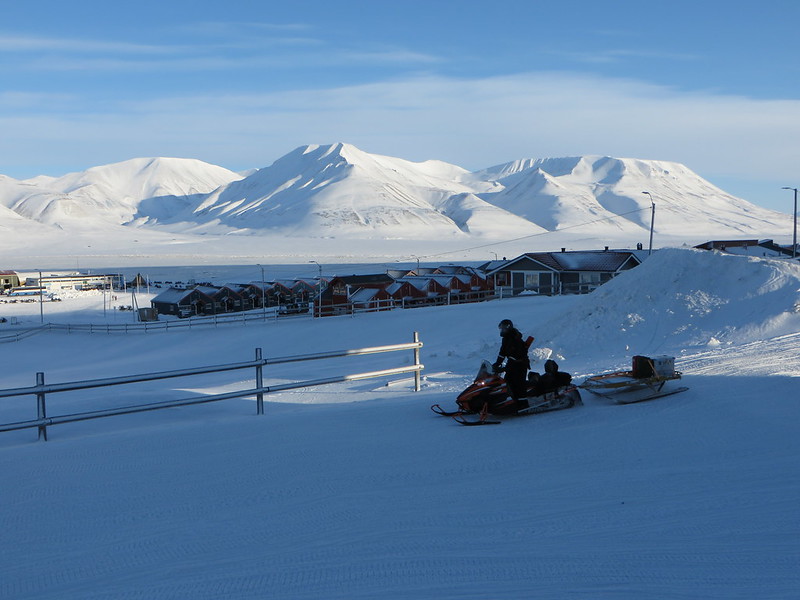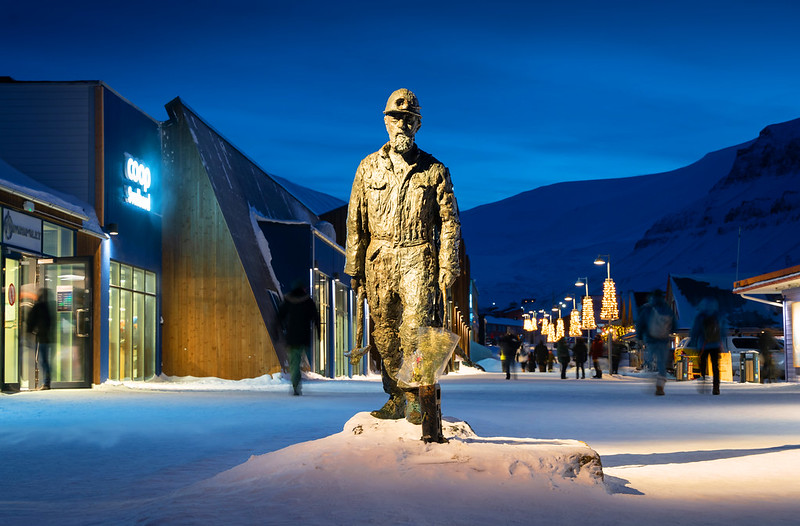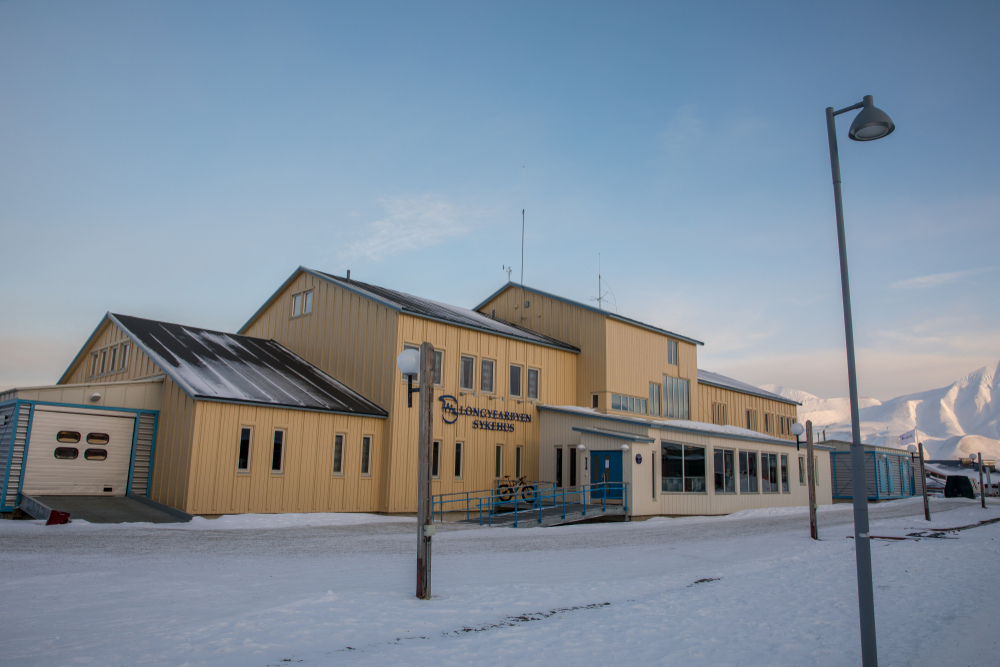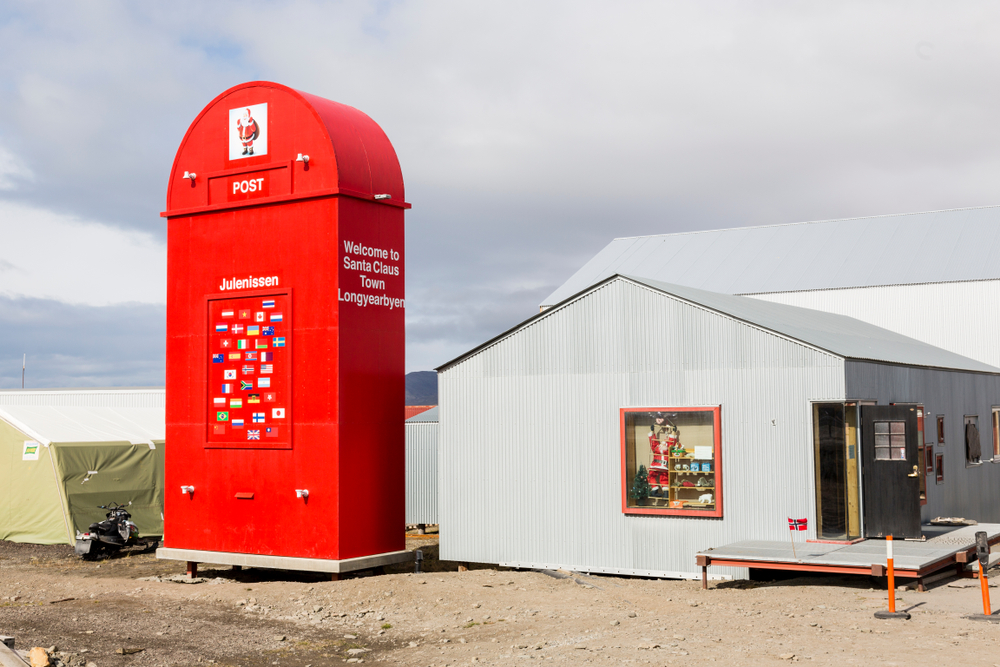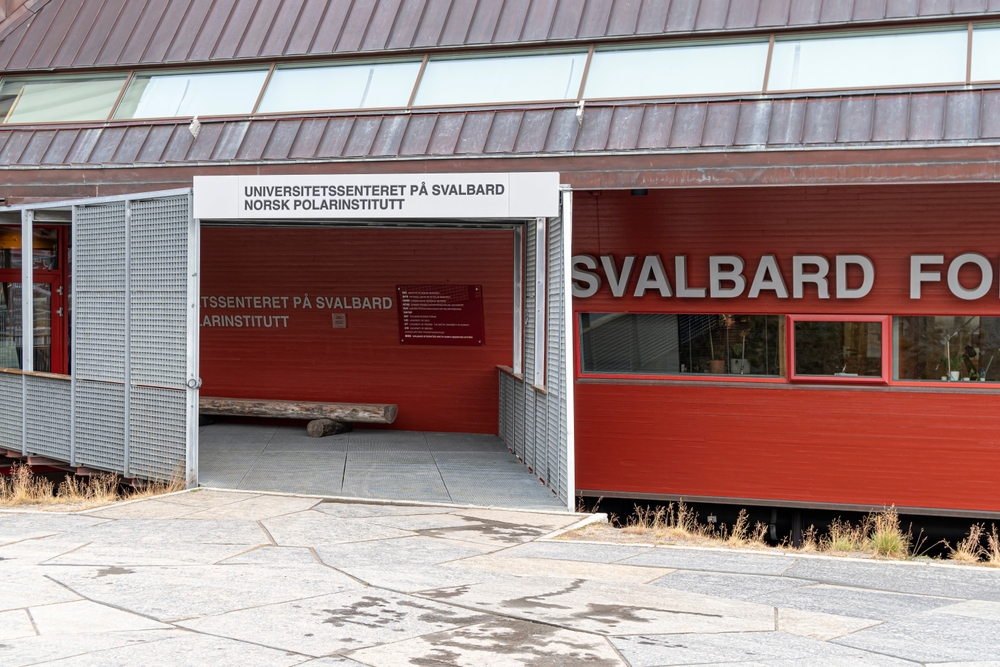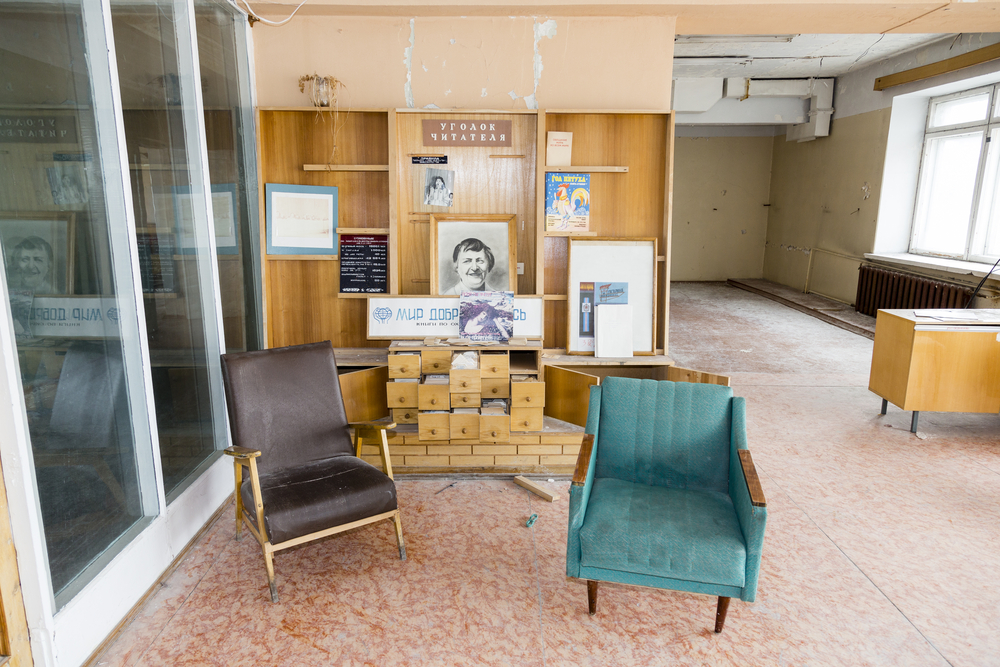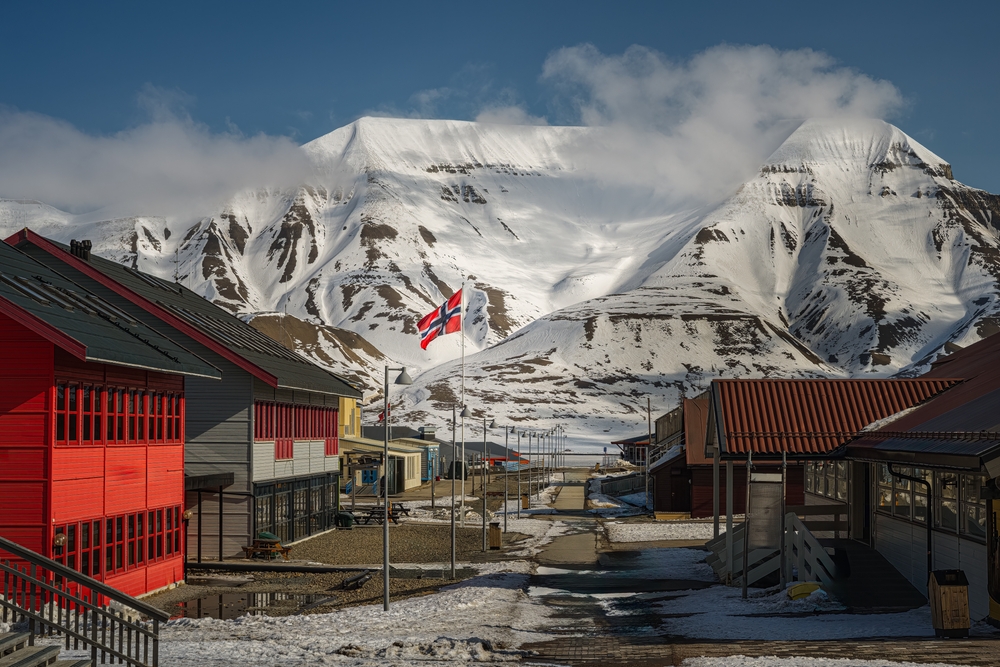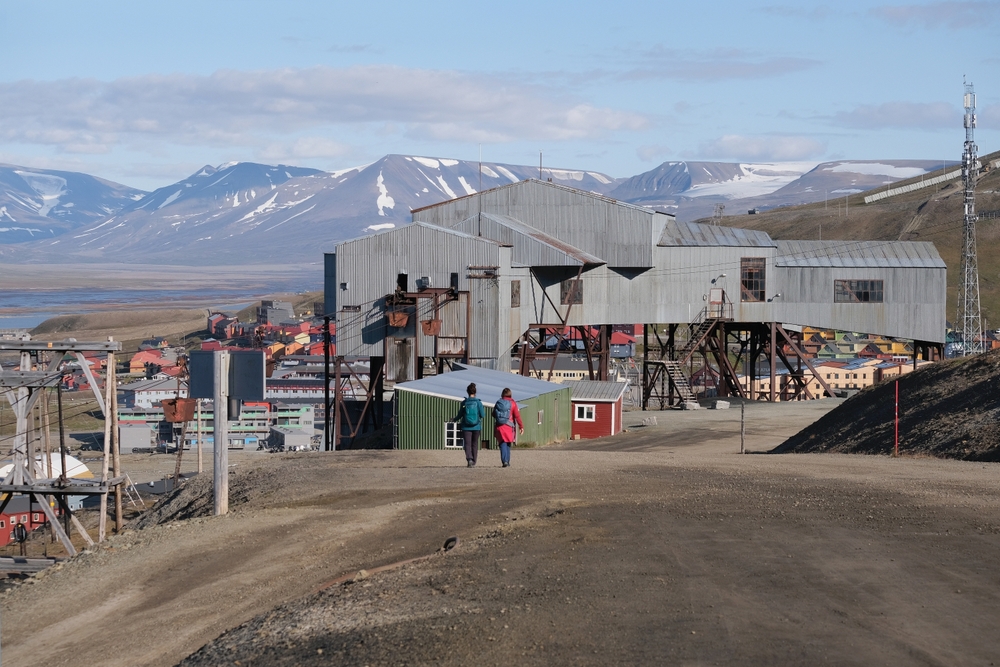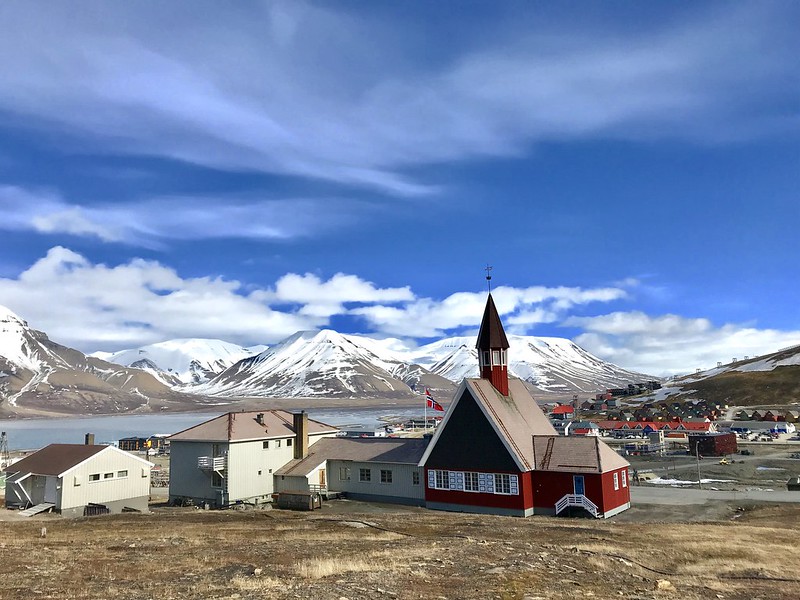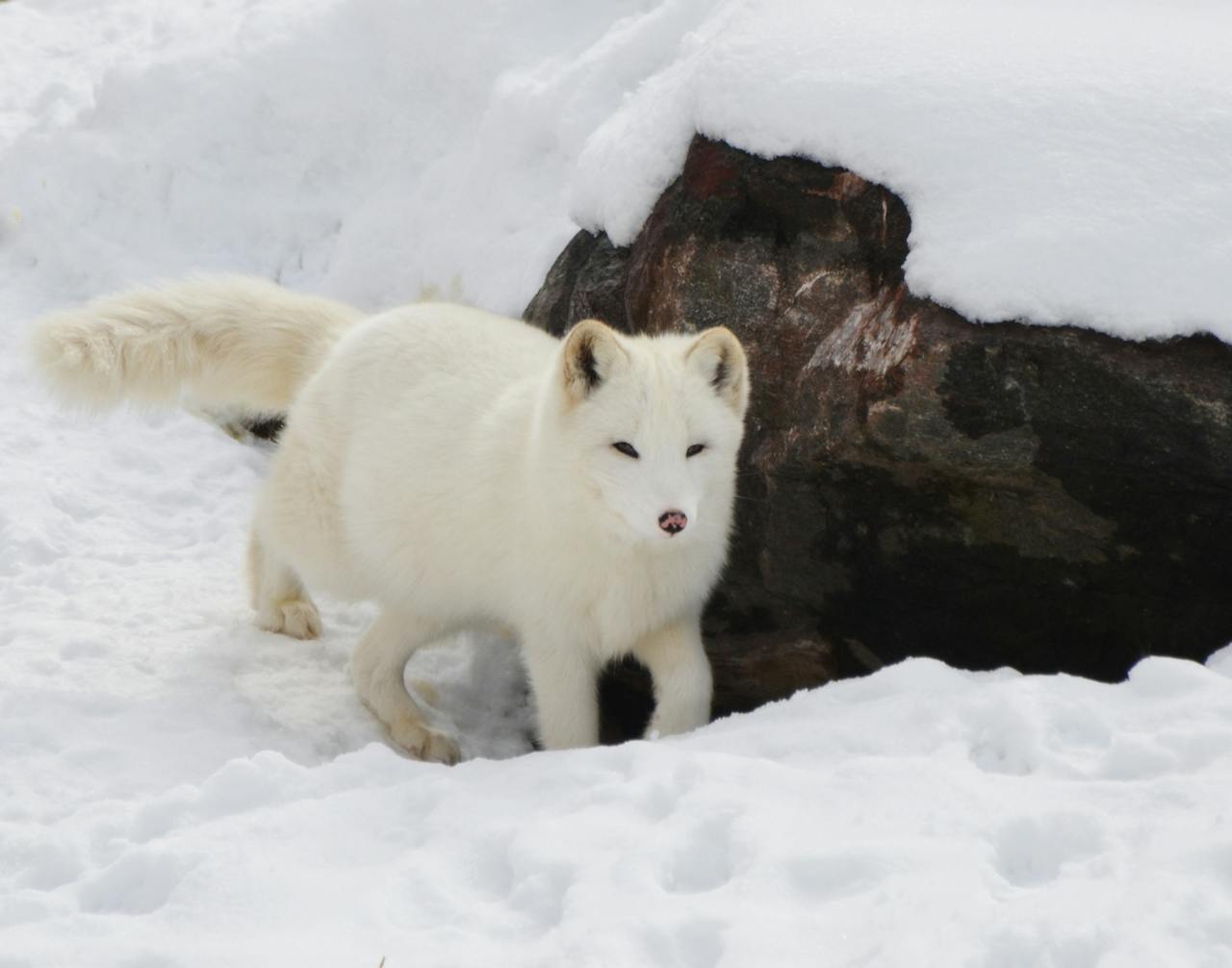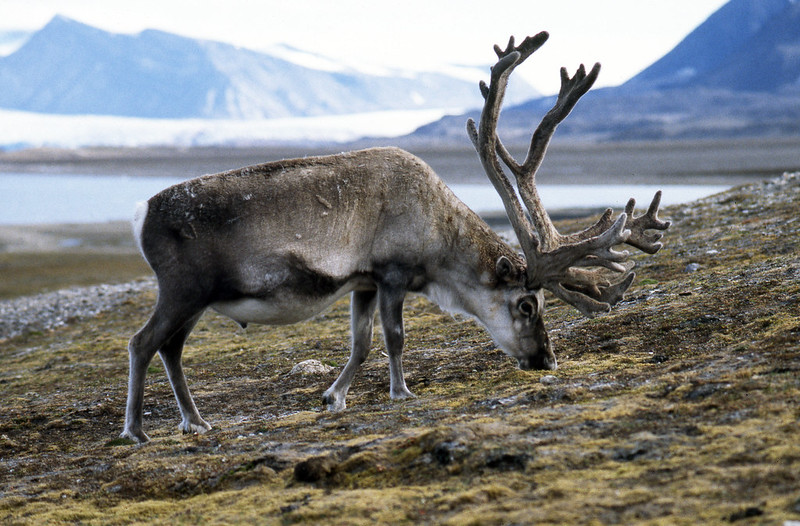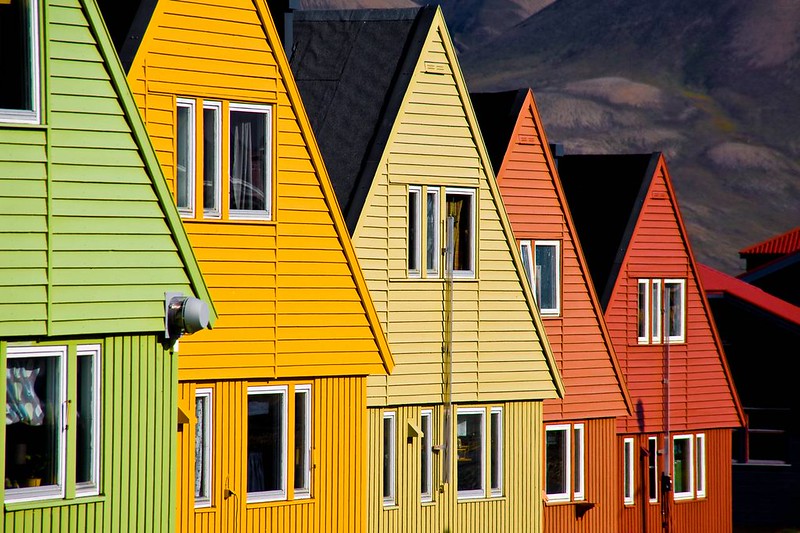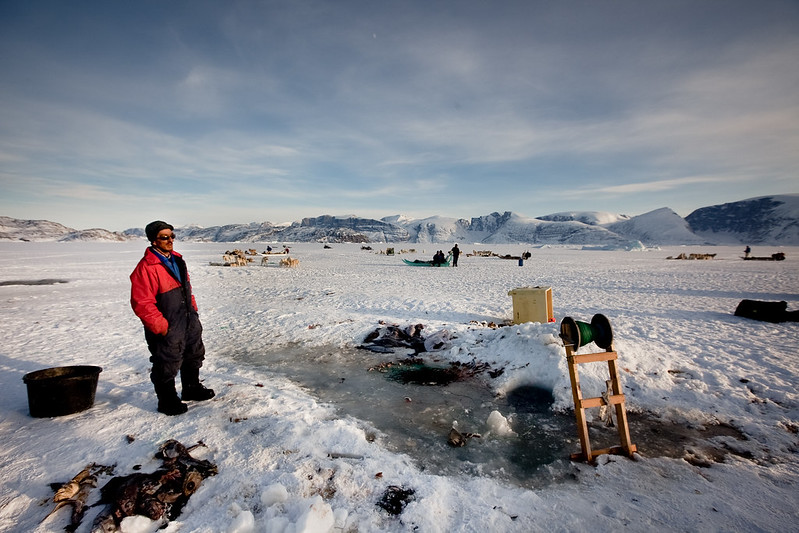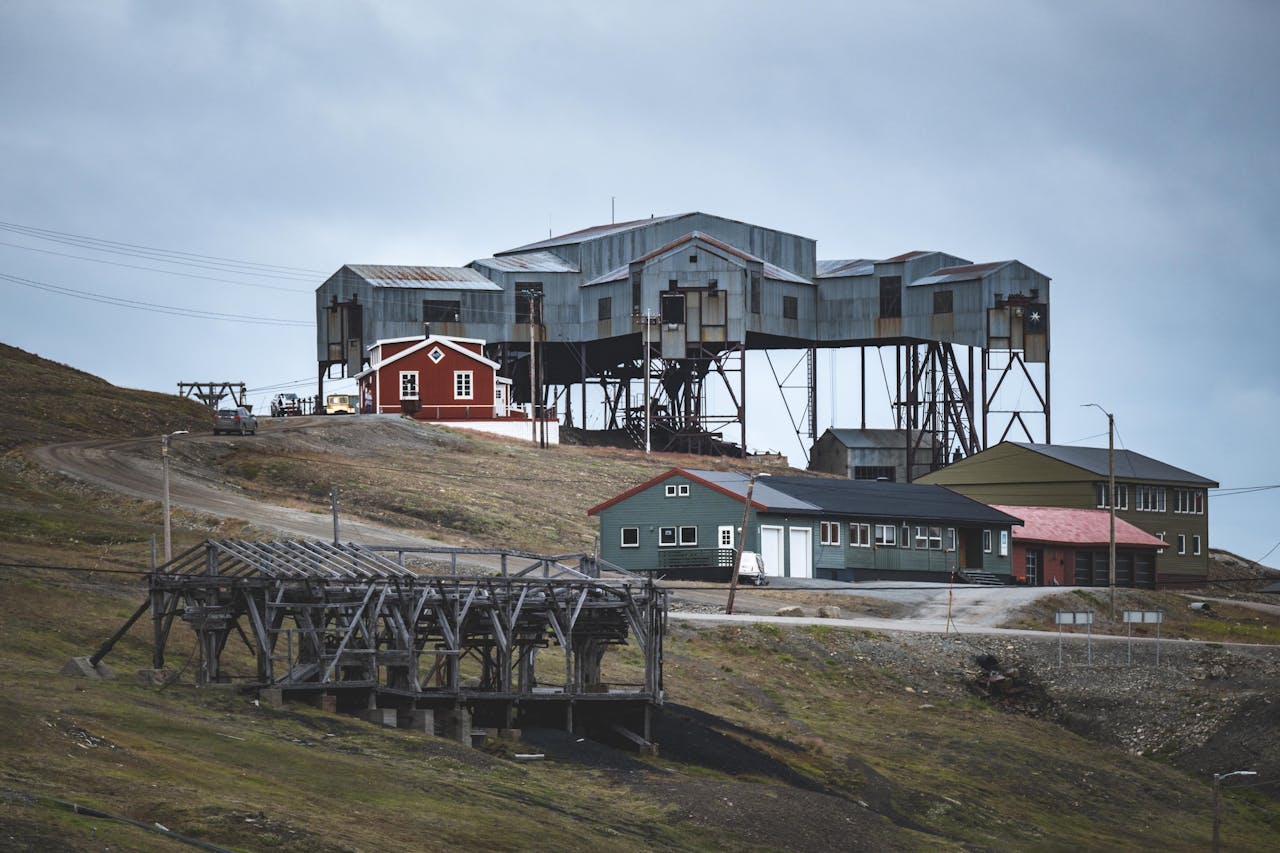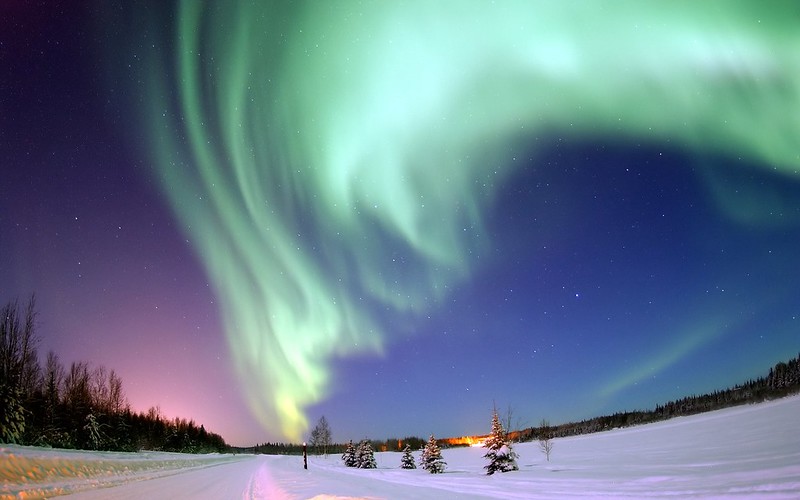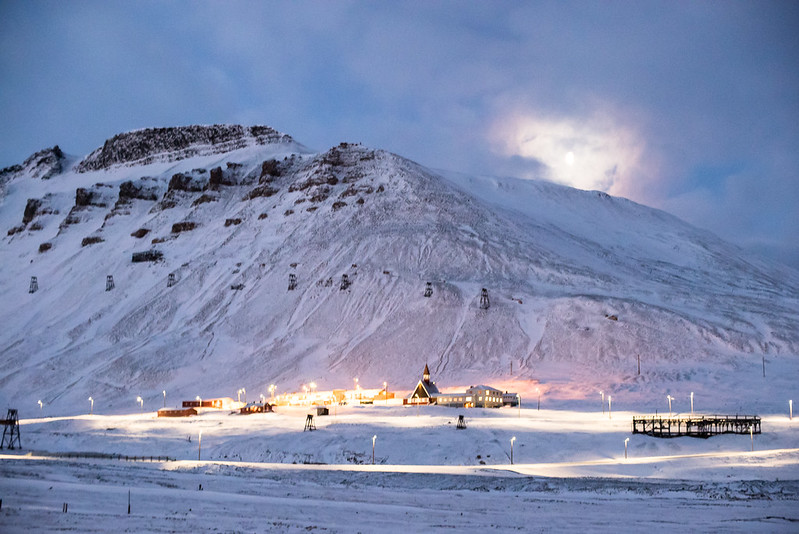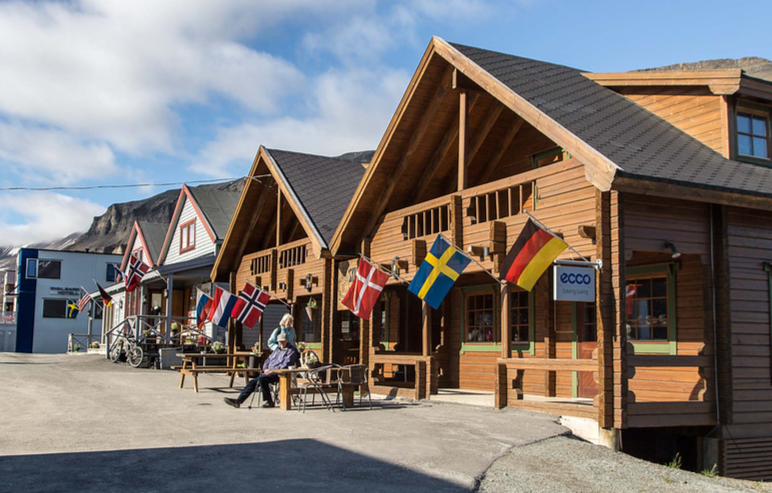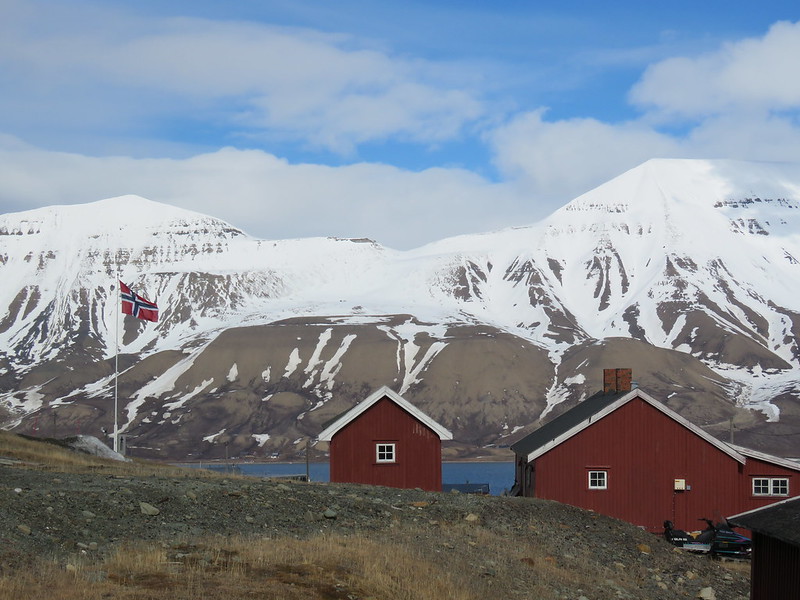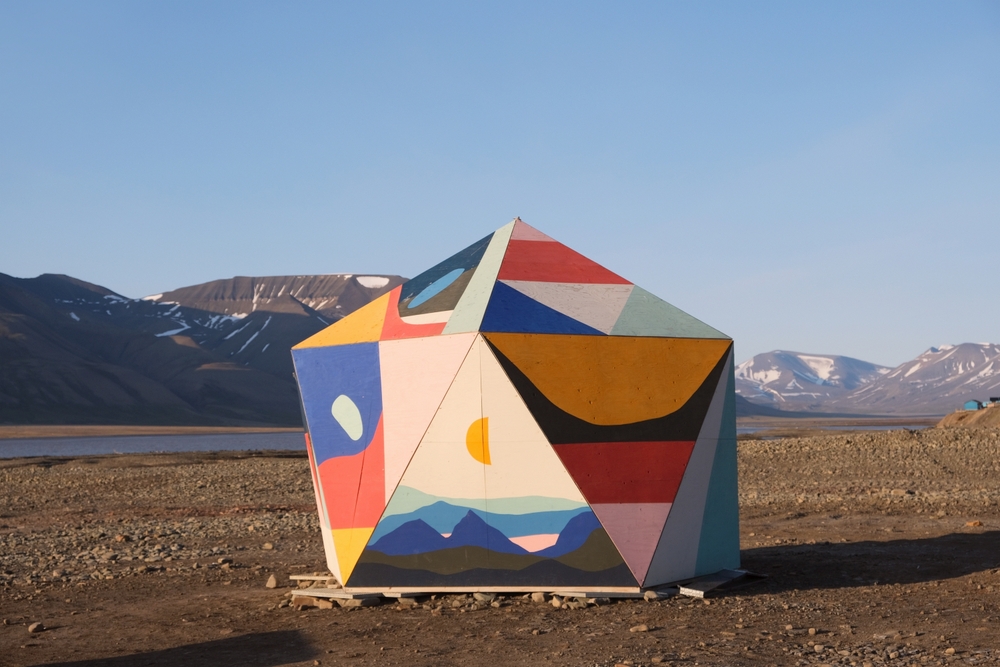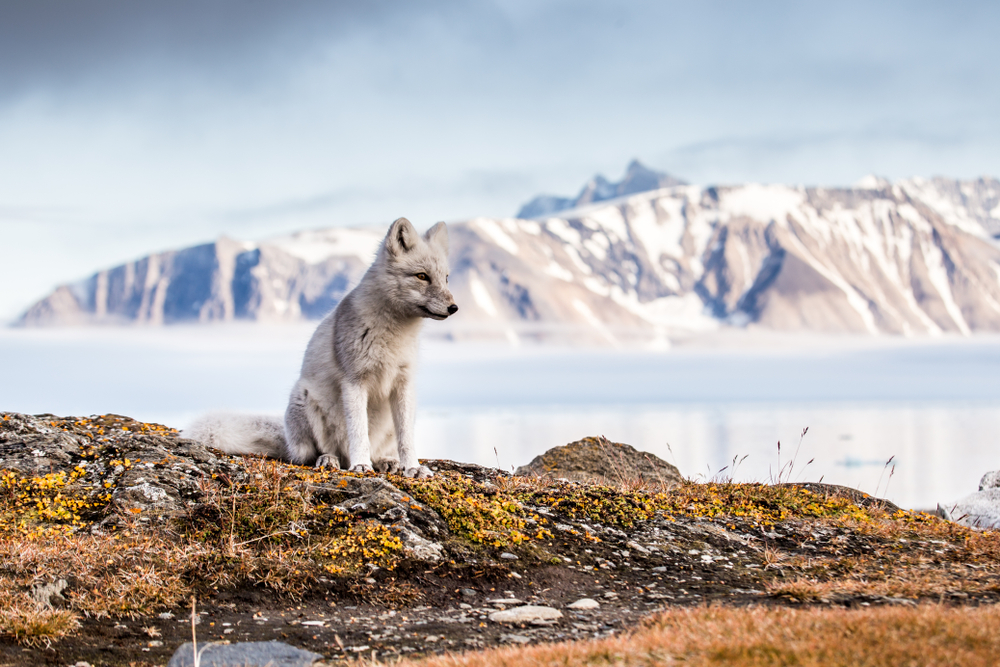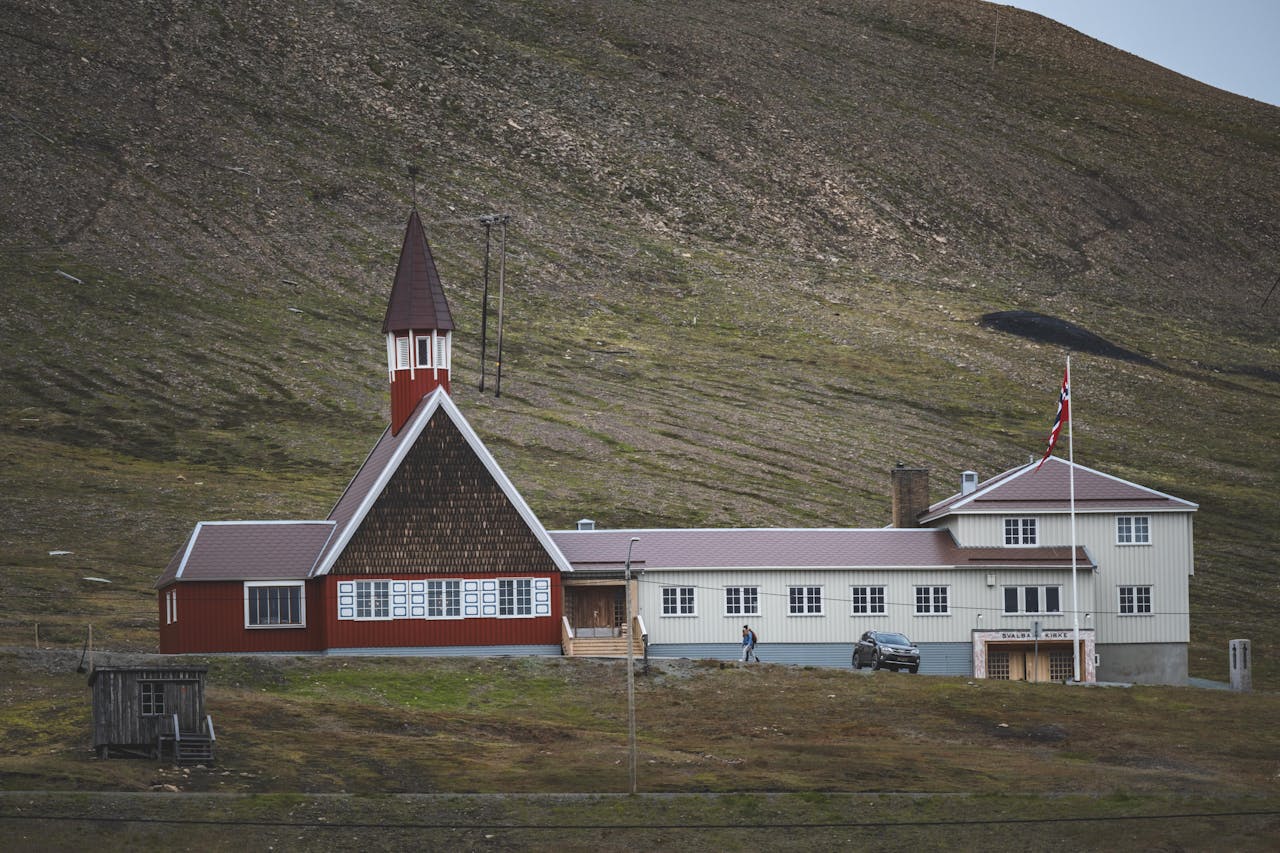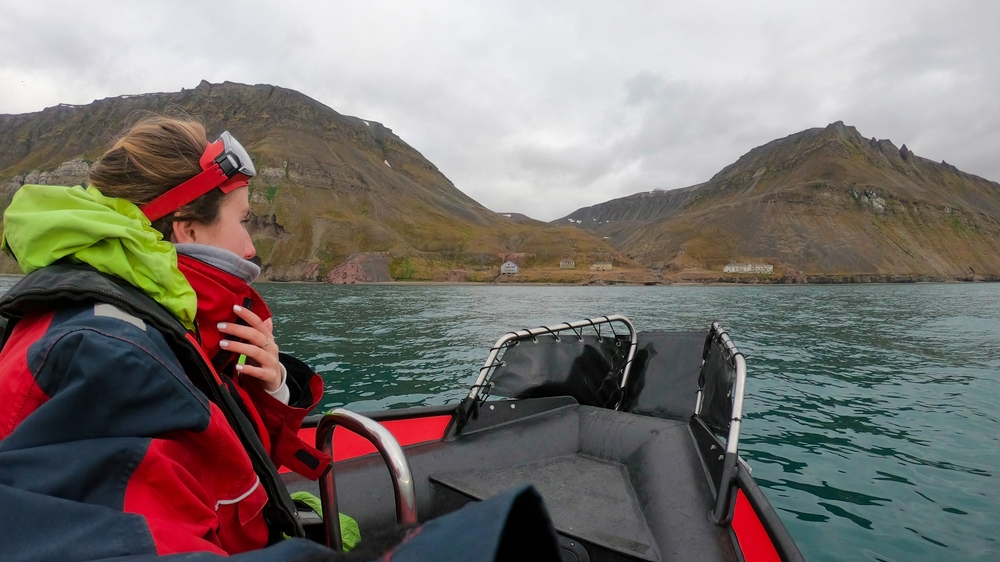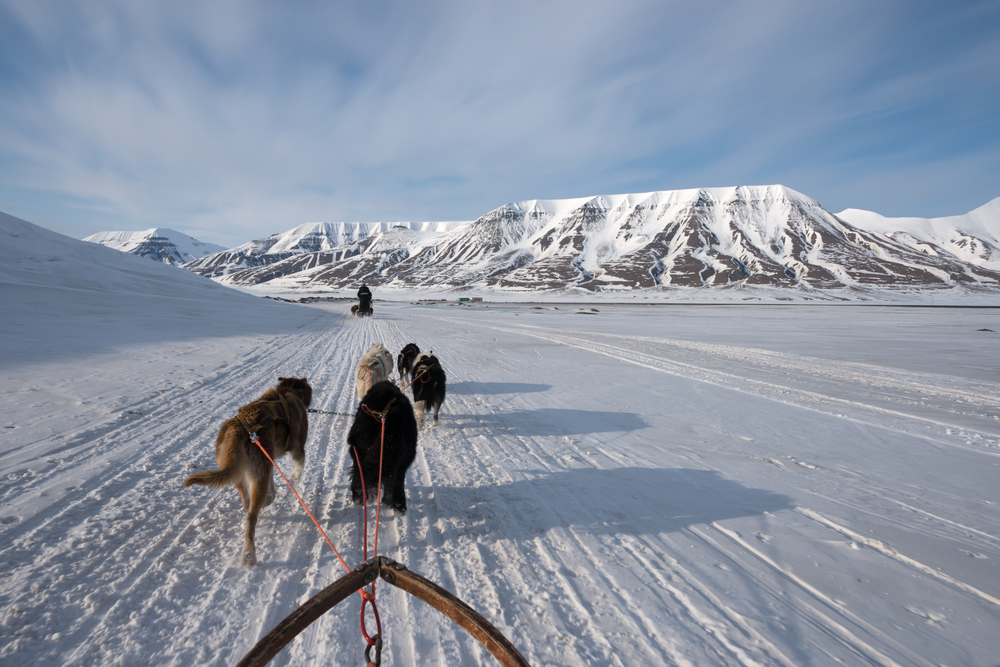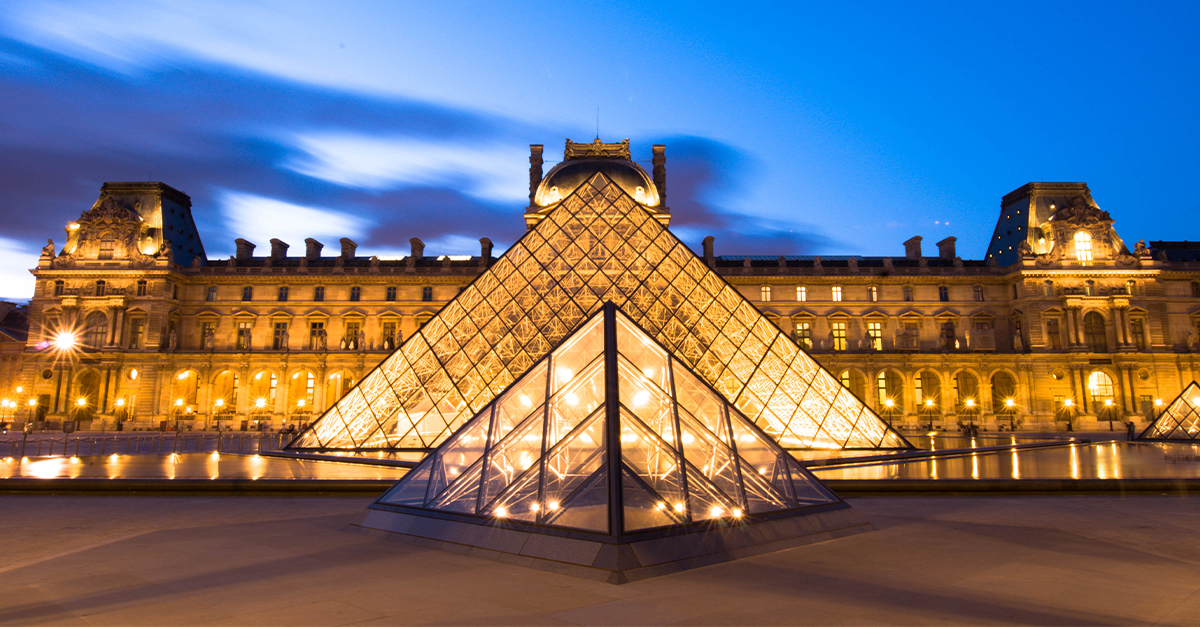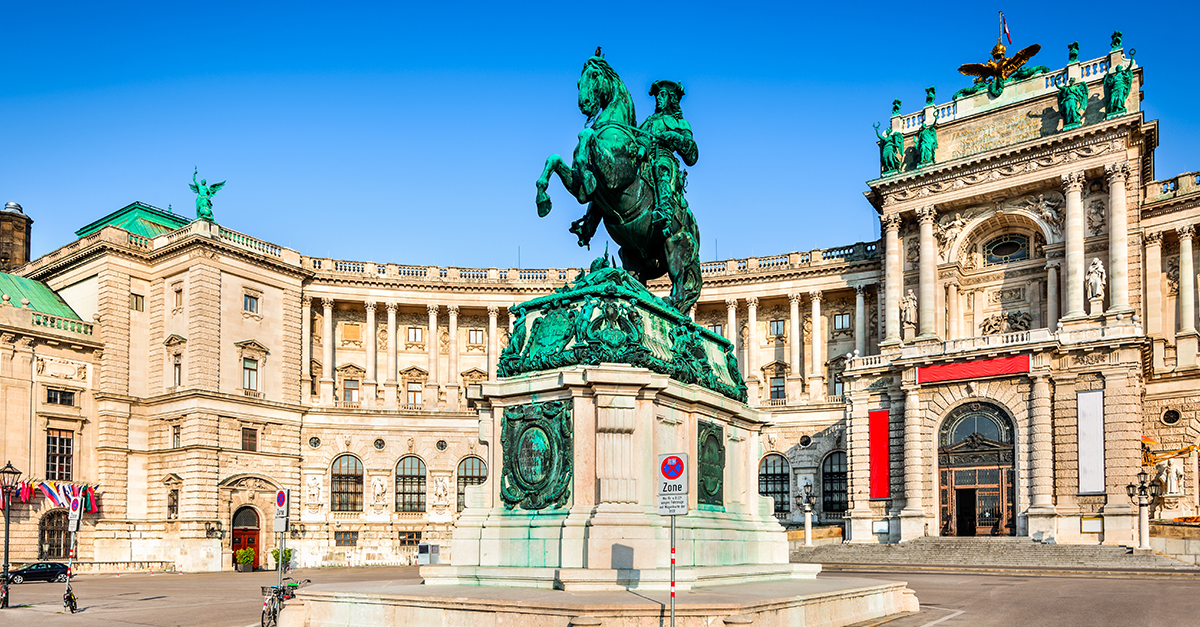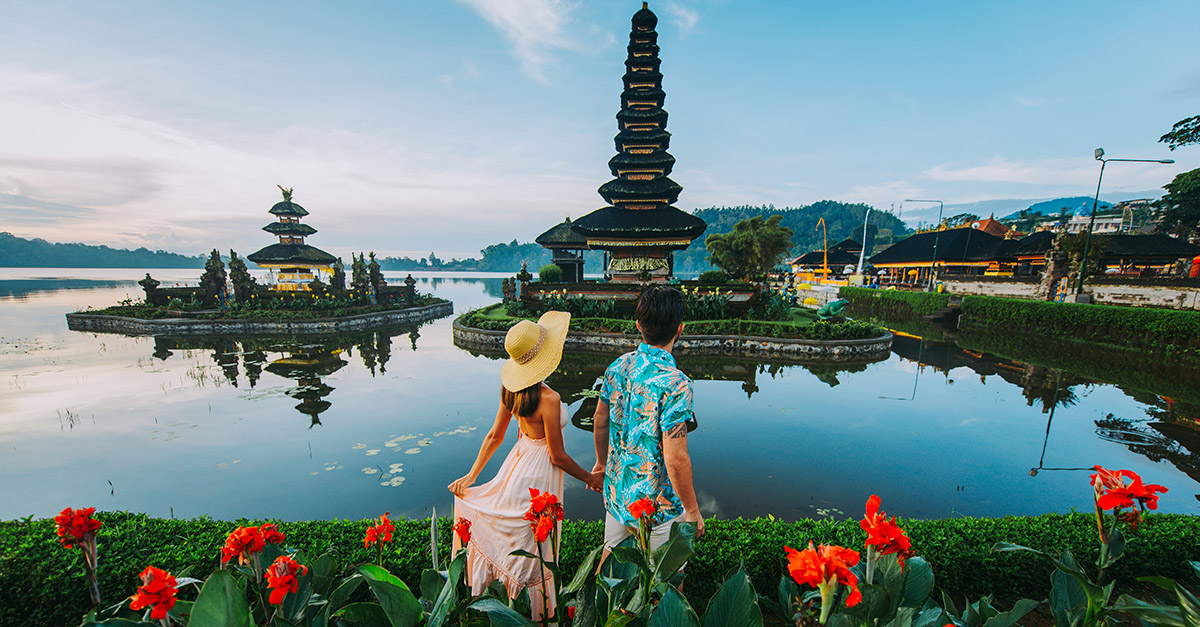All about Longyearbyen
Longyearbyen, the world’s second northernmost village is on the Svalbard archipelago in Norway. It sits at a staggering 78 degrees north, near to the North Pole. As one might expect, the village faces extreme conditions like midnight sun and polar nights within the Arctic Circle.

Arctic weather is not for the faint of heart
Longyearbyen experiences a polar climate with harsh winters and mild summers. Temperatures drop below -20°C in winter but rarely exceed 7°C in the summer. Due to the extreme cold, it receives little rainfall, which classifies it as an Arctic desert.
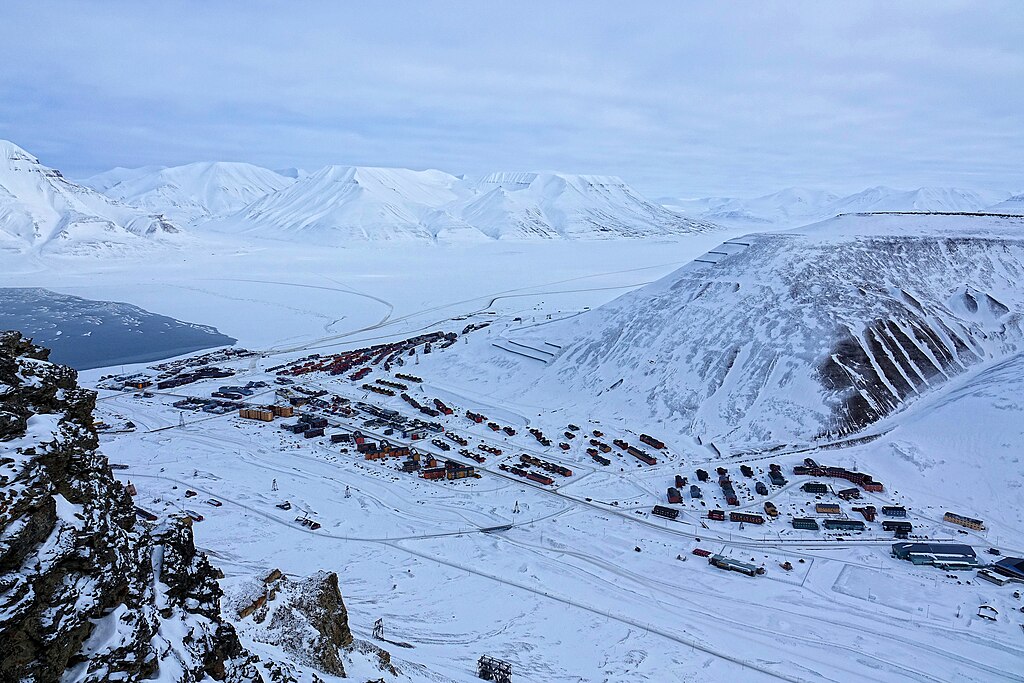 Bjørn Christian Tørrissen, CC BY-SA 4.0, Wikimedia Commons
Bjørn Christian Tørrissen, CC BY-SA 4.0, Wikimedia Commons
Midnight sun, polar night
Longyearbyen experiences the midnight sun from mid-April to late August and the polar night from late October to mid-February, resulting in unique living conditions for residents. Their circadian rhythms are affected by this schedule, and they have had to adapt over time.
 Bjørn Christian Tørrissen, CC BY-SA 4.0, Wikimedia Commons
Bjørn Christian Tørrissen, CC BY-SA 4.0, Wikimedia Commons
A snapshot of a distant past
Longyearbyen initially supported coal mining when it was founded by American industrialist John Munroe Longyear in 1906. It has evolved significantly since then, experiencing economic shifts with international research and tourism.
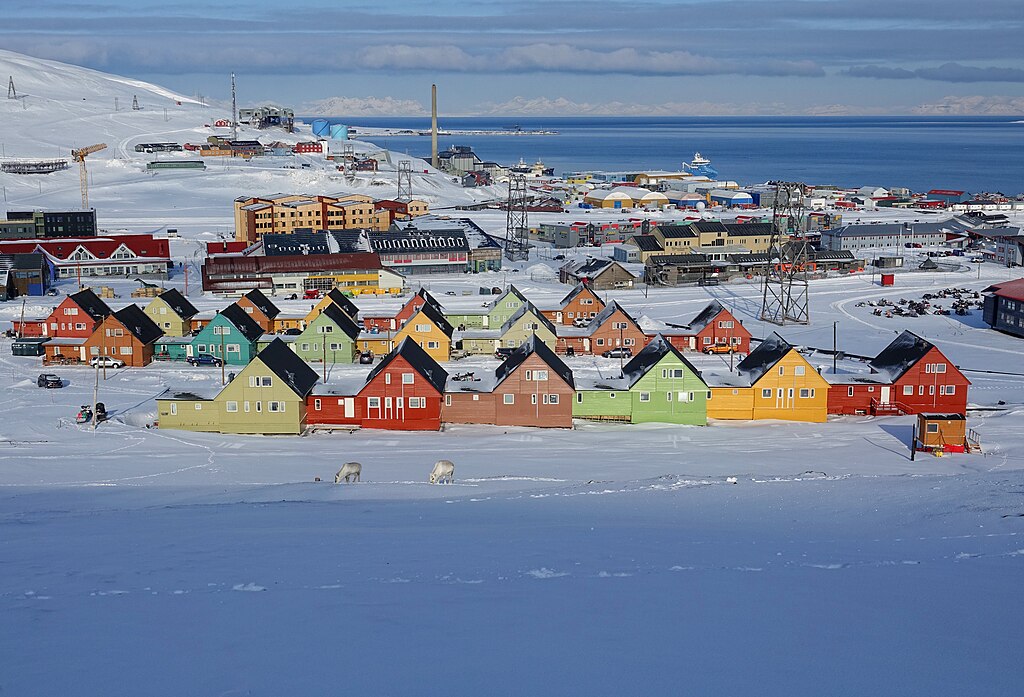 Bjørn Christian Tørrissen, CC BY-SA 4.0, Wikimedia Commons
Bjørn Christian Tørrissen, CC BY-SA 4.0, Wikimedia Commons
The Svalbard Treaty
Since Longyearbyen is part of the Svalbard archipelago, it is controlled by Norway under the 1920 Svalbard Treaty. Residents from treaty countries can live, work, and conduct business in Norway, which enhances the town’s diversity.
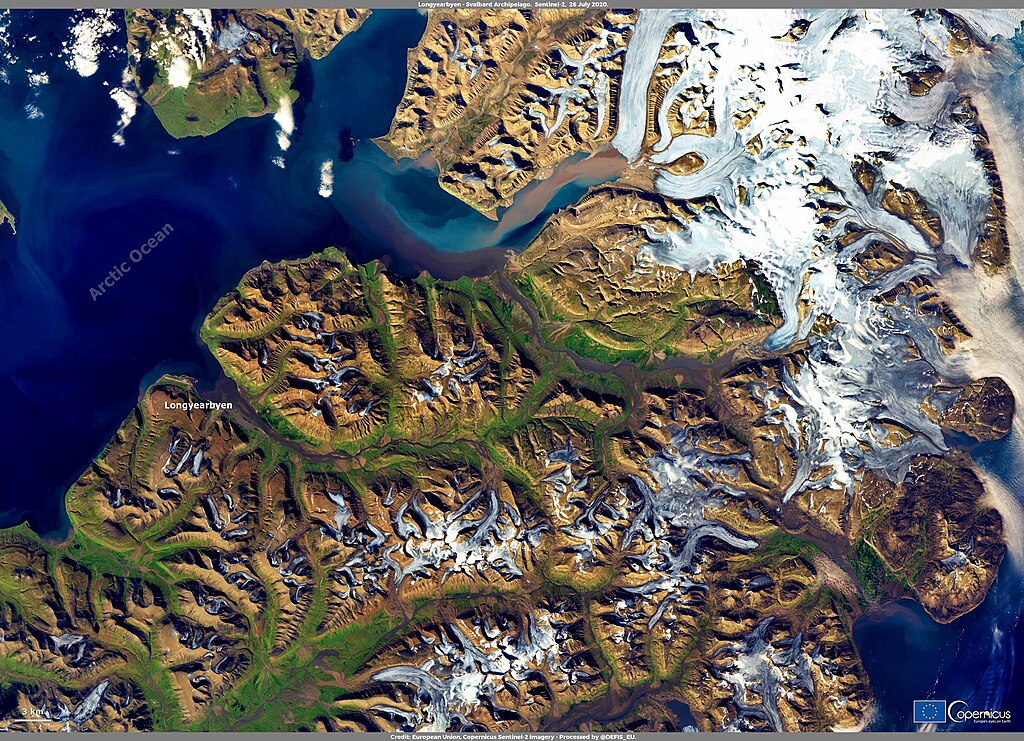 European Union, Wikimedia Commons
European Union, Wikimedia Commons
Who lives in Longyearbyen?
Longyearbyen is a diverse community with around 2,400 residents from over 50 countries. People from Thailand, Sweden, Russia, and Ukraine make up the non-Norwegian portion of the population. Temporary jobs, particularly in research and tourism, contribute to this unique mix.
A rich culture in the north
Longyearbyen is heavily influenced by Norwegian culture, hosting various cultural events throughout the year. Popular ones include the Polar Jazz Festival in February, which is considered the world's most northerly jazz festival, and the Svalbard Ski Marathon.
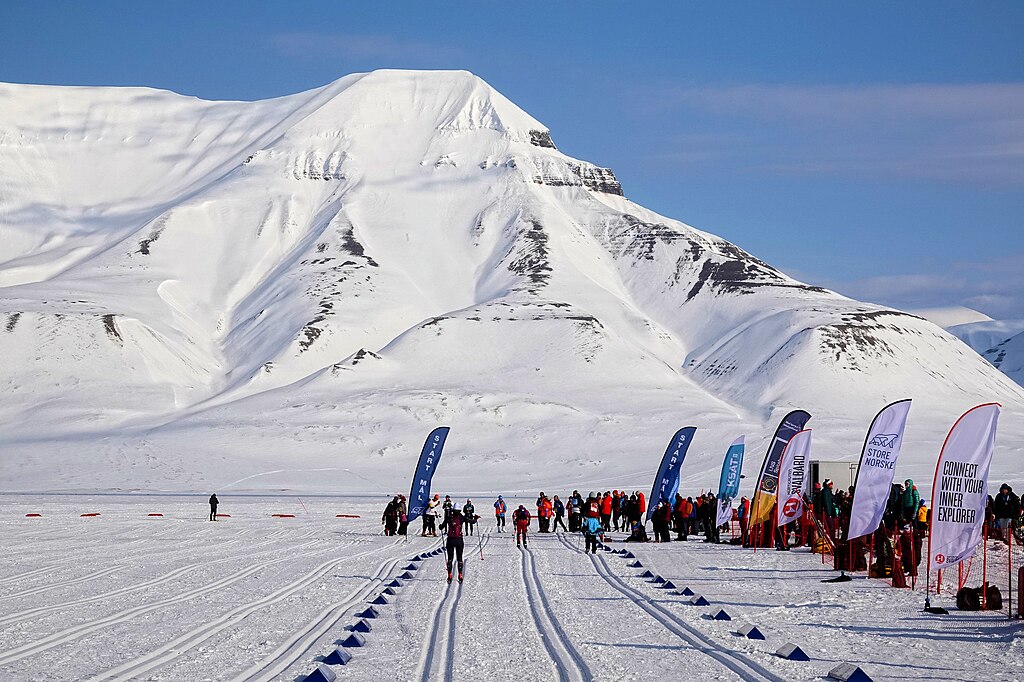 Bjørn Christian Tørrissen, CC BY-SA 4.0, Wikimedia Commons
Bjørn Christian Tørrissen, CC BY-SA 4.0, Wikimedia Commons
Not your typical neighborhoods
Longyearbyen houses are special due to their colorful appearances. They are mainly wooden structures designed to withstand harsh Arctic conditions, and they are raised on stilts to prevent heat transfer to the permafrost. This ensures stability of the homes in extreme temperatures.
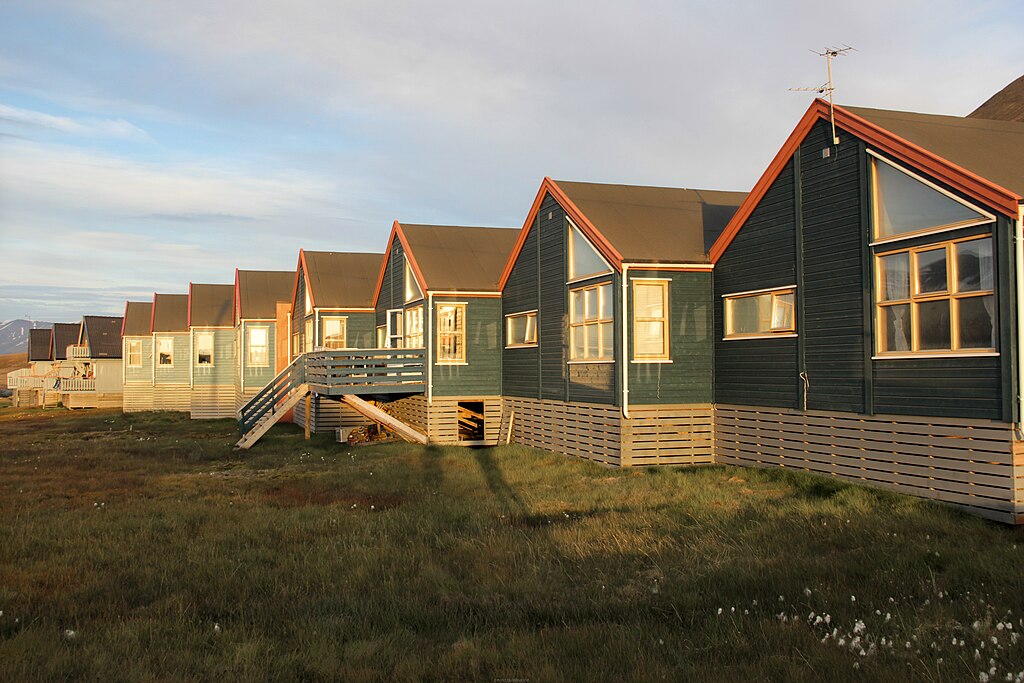 Buiobuione, CC BY-SA 4.0, Wikimedia Commons
Buiobuione, CC BY-SA 4.0, Wikimedia Commons
Unorthodox architecture
Longyearbyen buildings are designed for Arctic conditions with insulation and durable materials. Bright colors stand out in snowy landscapes and offer practical benefits like increased visibility.
A tight-knit community
Longyearbyen residents have normal daily routines despite living in a small, remote community. They participate in shared activities and come to the community center for social events. Statistics show residents in Svalbard typically live for seven years.
A specific set of laws to follow
Longyearbyen has a few laws that are unique to the area. For example, due to its harsh climate, bodies don't decompose in permafrost, so locals are buried on the mainland. Additionally, pregnant women often travel to the mainland as well to give birth.
Safety measures in place
Longyearbyen has safety protocols for residents and visitors due to its harsh environment. This includes safety training (especially for visitors), outdoor rules, and a well-organized search and rescue system. The town hospital is prepared for Arctic emergencies.
Getting their mail
Longyearbyen is home to the northernmost post office in the world. Sending a postcard from here is considered a unique memento. Delivery times are often variable due to uncertain travel conditions in the area.
Education and learning
Longyearbyen offers education up to secondary school and is home to the University Centre in Svalbard (UNIS), the northernmost institution for higher learning globally. The UNIS attracts students and researchers worldwide, especially those seeking to study the Arctic.
The public library
Longyearbyen's library is the most northern in the world. It offers a range of books, magazines, and digital resources in different languages. It also hosts cultural events like book talks and classes for the locals.
A leader in polar research
Longyearbyen is a hub for polar research, focusing on Arctic biology, geology, and climate change due to the region's unique environment. With Svalbard warming at four times the global average, the community is motivated to reduce emissions.
A hub for climate change science
Longyearbyen excels in climate change research due to its Arctic setting. Scientists study effects of global warming on glaciers, permafrost, and ecosystems, collaborating with other northern science centers in Canada, Iceland, and Russia.
Go on an arctic expedition
Longyearbyen has a rich polar exploration history. The village typically serves as a starting point for Arctic expeditions. Museums and archives hold important artifacts, while modern researchers use it as a base.
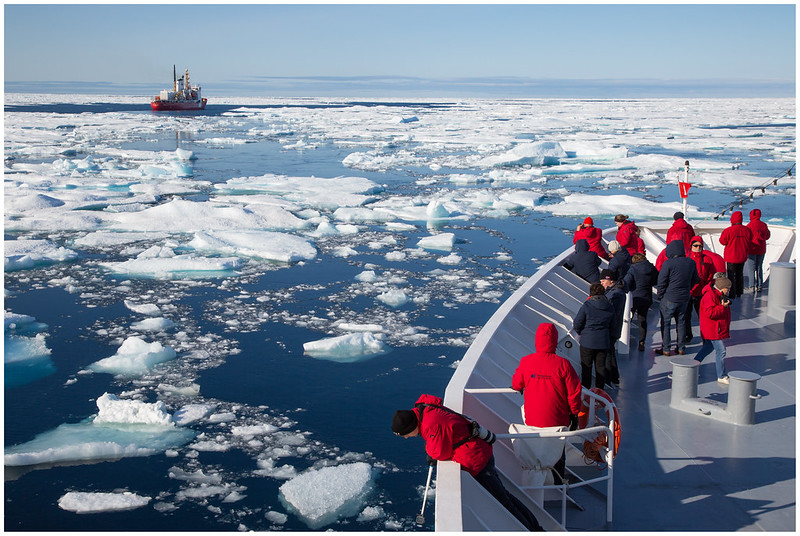 Martha de Jong-Lantink, Flickr
Martha de Jong-Lantink, Flickr
A strictly protected environment
Longyearbyen, and the Svalbard archipelago in general, is known for having strict environmental laws. The Svalbard Environmental Protection Act protects the unique Arctic environment, which limits new construction in the area.
The world-famous seed vault
The Svalbard Global Seed Vault is a renowned facility built to store replicated seed samples from multiple countries. Established in 2008 in Longyearbyen, it serves as a global food supply “safety net” in case of a widespread emergency (or, dare we say, apocalypse).
 Marcin Kadziolka, Shutterstock
Marcin Kadziolka, Shutterstock
Unique flora and fauna
Longyearbyen has unique Arctic wildlife like polar bears, Arctic foxes, reindeer, and seabirds. In terms of the plant life, the tundra in Svalbard supports a diversity of herbs, grasses, sedges, shrubs, ferns, mosses, and lichens.
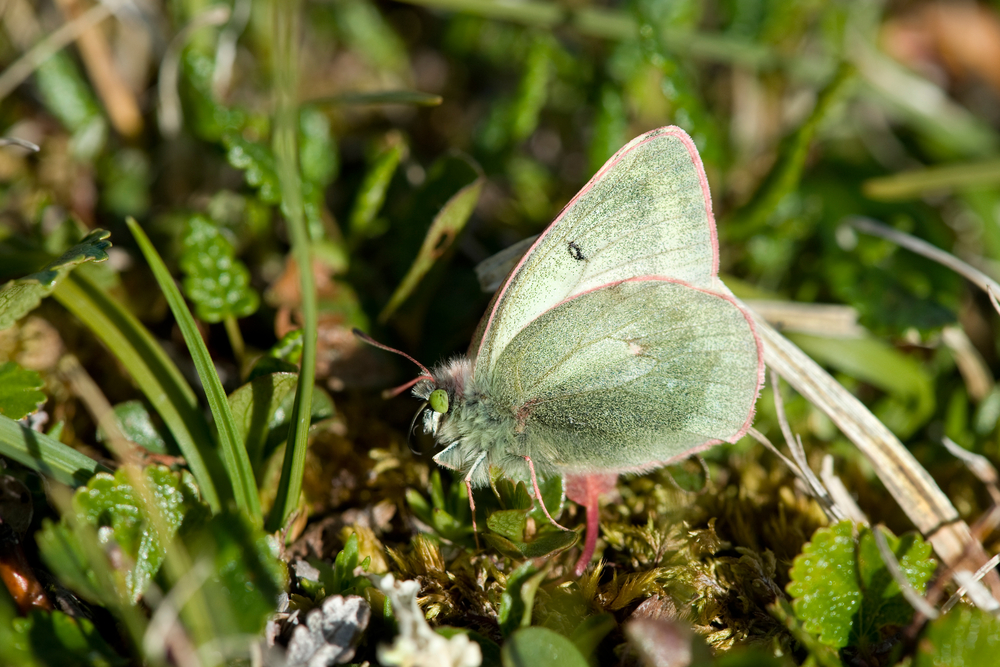 Rasmus Holmboe Dahl, Shutterstock
Rasmus Holmboe Dahl, Shutterstock
Polar bears are dangerous
In Longyearbyen, residents and visitors must carry firearms and flares for polar bear safety. Polar bears tend to wander into the village uninvited, looking for food. Warning systems and patrols are in place to ensure resident safety.
Arctic fox: the most common species
Arctic foxes are very common in Longyearbyen. Adapted to the extreme cold environment, they scavenge in town and hunt in the tundra, blending in with their surroundings thanks to their changing coat color.
Svalbard reindeer: a local symbol
Svalbard reindeer are a unique subspecies thriving in the archipelago. They are smaller than mainland reindeer, and just like the arctic fox, they have long adapted to Arctic conditions. They often graze near Longyearbyen, enhancing wildlife experiences.
Tourism is a big industry
Historically, whaling and coal mining thrived in Svalbard, but now polar exploration and tourism reign. The harsh yet fragile environment attracts tourists to Longyearbyen for Arctic beauty, wildlife, and activities for thrillseekers.
A great place for fishing
Fishing is also an important industry in Longyearbyen. Local fishermen supply fresh seafood like Arctic char and cod, helping boost the economy with market and restaurant sales. In recent years, Isfjorden (also known as the 'Ice Fjord') near Longyearbyen has been filled with cod during the late summer and autumn season.
An ode to its coal mining era
Despite the decline in coal mining, it still remains integral to Longyearbyen's identity. Such is showcased in the town's mining museum. Visitors can learn about early mining practices, miner stories, and the industry's impact on the community.
The darkest skies for aurora watching
The polar night in Svalbard lasts from late October to mid-February, with the peak from November 14th to January 29th. It brings darkness and winter cold, but also the opportunity for dark sky tourism and activities like aurora borealis watching.
A north-inspired food and drink menu
Despite environmental challenges, many farms now operate on Svalbard, providing fresh food instead of imported goods. Longyearbyen cuisine centers on traditional Norwegian dishes. Local delicacies include Arctic char, reindeer, and seal.
 Svein Halvor Halvorsen, Flickr
Svein Halvor Halvorsen, Flickr
Transportation and how to get there
Longyearbyen is primarily accessed by air through Svalbard Airport, the northernmost airport with regular public flights. It also offers flights to mainland Norway and welcomes tourists via cruise ships in the summer.
Access to healthcare requires creative solutions
Longyearbyen offers limited healthcare facilities, mainly for residents. Longyearbyen Hospital is the only hospital in the area. It’s small and focused on emergency care only. Patients often need to travel to the mainland for specialized treatment.
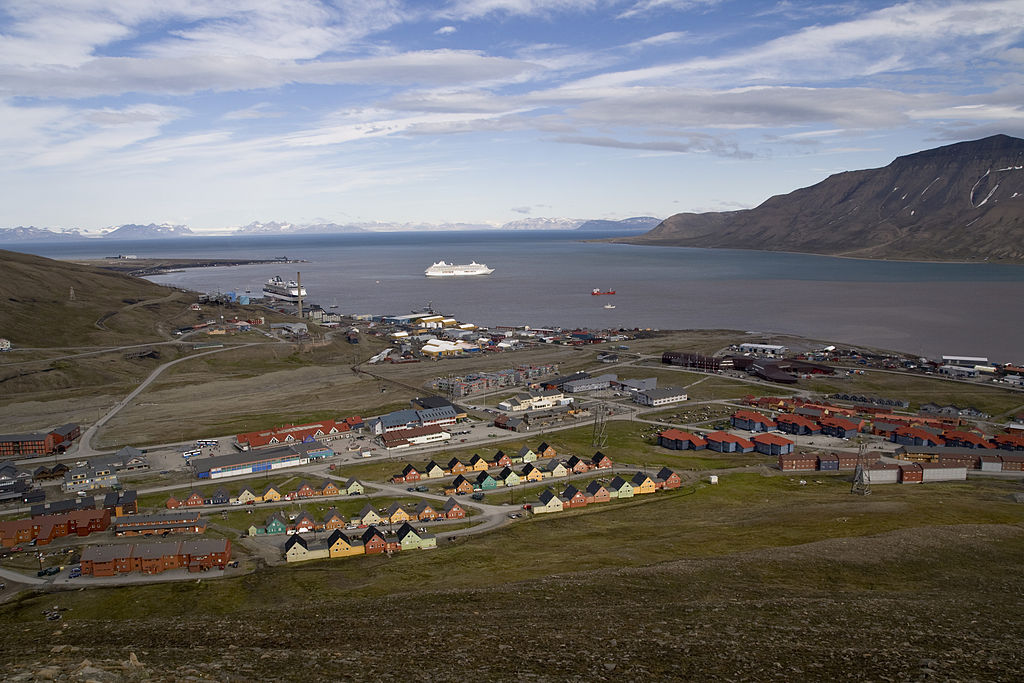 Hylgeriak / Wikipedia, CC BY-SA 3.0, Wikimedia Commons
Hylgeriak / Wikipedia, CC BY-SA 3.0, Wikimedia Commons
Powered by coal
Longyearbyen's coal-fired power plant provides electricity and heating. Such is a direct influence of the coal mining history of the village. Discussions today now center on transitioning to eco-friendly and renewable energy sources.
A move to sustainable
Longyearbyen prioritizes sustainability, being recognized as one of Norway's most eco-friendly spots. The village is exploring sustainable practices to reduce its environmental footprint, including waste reduction, recycling, and eco-tourism initiatives.
Is there internet?
The Svalbard Undersea Cable System connects Svalbard to Norway with two submarine cables made of optical fiber. It provides high-speed internet and reliable telecommunications services to the area, keeping residents and researchers connected to the rest of the world.
A vibrant art culture
Longyearbyen boasts a lively art scene with art galleries, museums, and cultural centers showcasing Arctic art, history, and science. Svalbard Museum, in particular, focuses on natural and cultural history.
Celebrating a proud heritage
Longyearbyen features various historical sites related to mining, including abandoned mines and old buildings. Additionally, Svalbard contains remnants of 17th-century whaling stations established by Dutch and English. Guided tours provide insights into the town's past.
The Svalbard Church
The Svalbard Church, also known as Svalbard kirke, was the northernmost church until 2017 when the St. Nicholas Russian Orthodox Church was built. It belongs to the Church of Norway and is in the Svalbard parish.
Sports in negative degree weather
Norwegians in Longyearbyen enjoy outdoor activities with most residents participating in some form of outdoor sport. Hiking, skiing, and snowmobiling are among the most popular. The city also provides indoor amenities such as a sports hall, pool, and gym.
An active dog-sledding culture
Dog sledding in Longyearbyen is a popular way to explore Arctic landscapes. Guided tours available from various operators who are experienced in arctic navigation. Participants can learn more about sled dogs and their history on the tours.
The Midnight Sun Marathon
The Spitsbergen Marathon in Longyearbyen takes place during the midnight sun. Runners traverse the Arctic landscape in a marathon, half marathon, or 10-km format. The marathon includes two laps of the half marathon course with mixed terrain.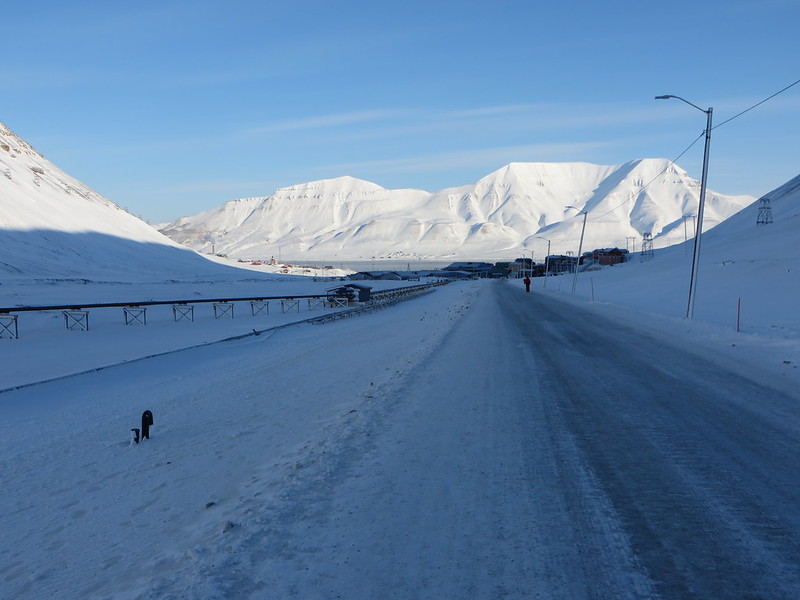 Bernt Rostad, Flickr
Bernt Rostad, Flickr

